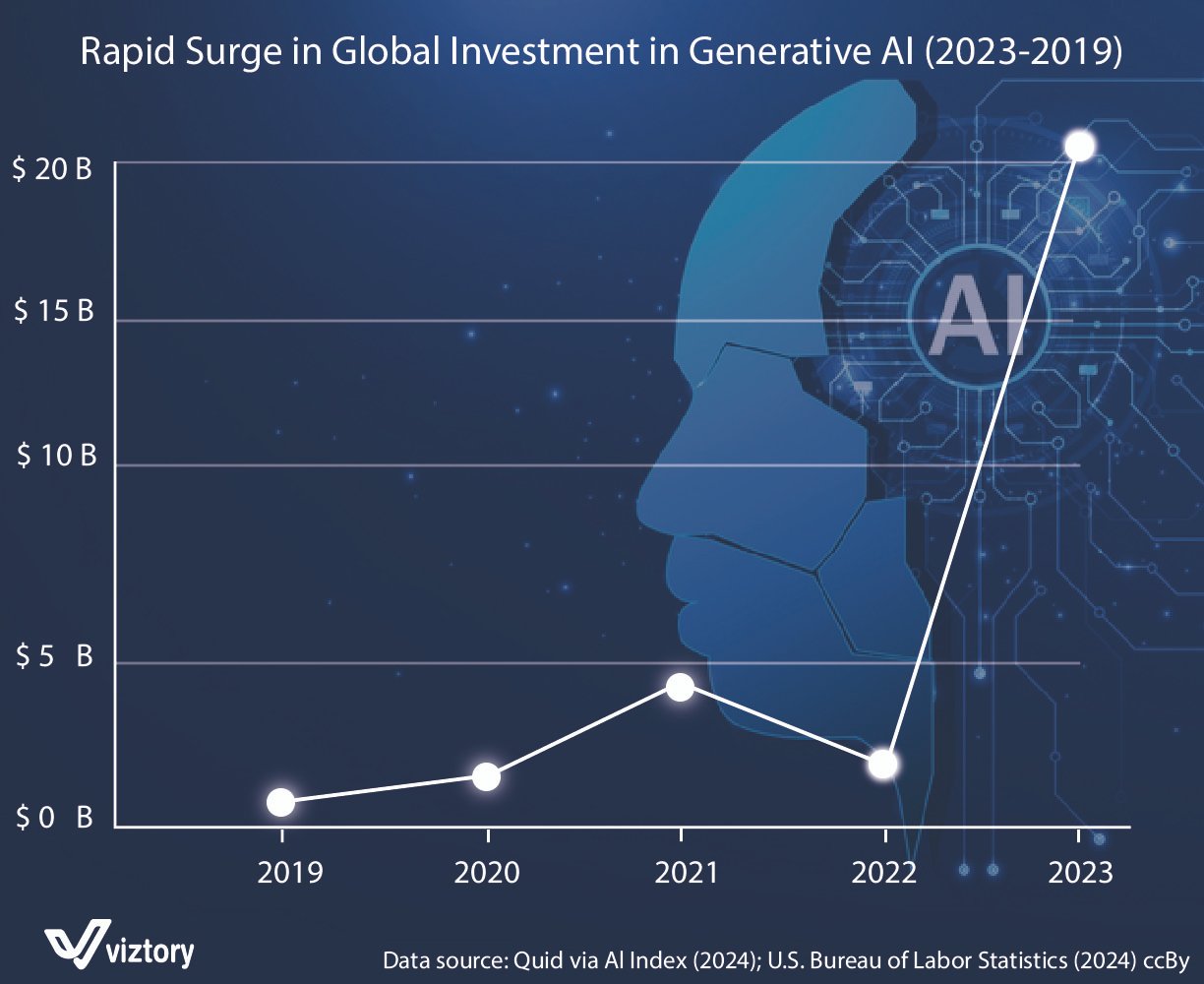The Rise of Generative AI and Its Impacts on the Middle East
-
Sep, Thu, 2024
The Rise of Generative AI and Its Impacts on the Middle East
Generative Artificial Intelligence (AI) has experienced a meteoric rise in global investment, as reflected in the image above, which depicts an exponential surge from 2019 to 2023. In particular, investments in 2023 soared to nearly $20 billion, marking a critical turning point for technological advancement in AI. This significant surge signals the increasing trust in and demand for generative AI applications, which encompass everything from language models to creative content generation, scientific research, and automation.
The image illustrates the steady yet modest growth of investments in AI from 2019 to 2021, followed by an extraordinary leap between 2022 and 2023. The latter is indicative of breakthroughs in generative AI, especially the adoption of AI-driven content in various industries, along with its influence on sectors like healthcare, finance, and customer services. The advancement and investment in generative AI are not just confined to North America or Europe; the Middle East, too, is becoming an integral part of this technological revolution.
Generative AI in the Middle East: Potential and Progress
The Middle East has been rapidly adapting to the global shift towards digitalization, and AI forms a critical part of this transformation. Governments in countries like the United Arab Emirates (UAE) and Saudi Arabia have demonstrated a proactive approach to integrating AI within their national frameworks. The UAE, for example, launched its first AI strategy in 2017, making significant strides toward becoming a global hub for AI by 2031. These initiatives align with their vision of leveraging AI to transform sectors like transport, healthcare, education, and energy.
Generative AI, with its unique capabilities, presents the Middle East with numerous opportunities for growth. One of the key industries poised for disruption is oil and gas. Traditionally a cornerstone of the region’s economy, this industry can harness AI for better resource management, predictive maintenance, and automation, resulting in enhanced productivity and sustainability. By integrating generative AI, companies could simulate vast data models for oil exploration, improving accuracy and reducing risks.
Beyond oil, the region is also seeing the rise of AI in tourism and entertainment. For example, in Saudi Arabia’s NEOM smart city project, generative AI is being used to create innovative and sustainable urban designs, blending futuristic ideas with Middle Eastern culture. AI’s creative power can support architecture, urban planning, and other sectors where design and function intertwine with culture and history.
Moreover, education and healthcare sectors in the Middle East are also set to benefit from this surge. The integration of AI in education, for example, could personalize learning experiences for students, making education more accessible across diverse demographics. Generative AI tools can offer medical professionals advanced diagnostic and treatment models, improving patient outcomes and reducing the burden on healthcare systems.
Challenges and Future Outlook
While the surge in global investments, particularly over the past couple of years, demonstrates growing faith in generative AI, challenges remain for the Middle East in fully capitalizing on this trend. These include ensuring robust regulatory frameworks, developing local talent, and mitigating data privacy concerns. Nonetheless, regional governments are committed to fostering an AI-driven ecosystem, evident in their initiatives to encourage innovation hubs, partnerships with leading global tech firms, and promoting STEM (Science, Technology, Engineering, and Mathematics) education across the younger generation.
As AI becomes more embedded in everyday life, Middle Eastern countries that are investing heavily in AI infrastructure now will position themselves as leaders in the Fourth Industrial Revolution. The region’s wealth of natural resources and ambitious visions for the future align with the global push toward generative AI, and this will only intensify over the coming years.
In conclusion, while the image above represents the global surge in investment in generative AI, it is equally representative of the Middle East’s ambition to ride the AI wave. As investments grow and the technology matures, the Middle East stands to become a significant player in the global AI landscape. The focus on diversification away from oil-based economies towards knowledge-based industries places AI at the heart of the region’s future prosperity, and generative AI, in particular, could prove to be a transformative force across numerous sectors.

